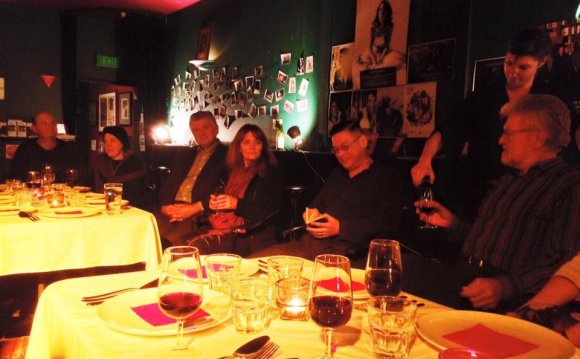
 To describe Kurt Elling as a jazz singer is only part of the story. He is also an explorer, a scholar, a poet, a historian, a photographer, a traveller and widely acknowledged king of his artform.
To describe Kurt Elling as a jazz singer is only part of the story. He is also an explorer, a scholar, a poet, a historian, a photographer, a traveller and widely acknowledged king of his artform.
At once, and in his stylish, idiosyncratic way, Elling’s vast repertoire pays homage to jazz’s rich musical heritage while taking it into new and exciting creative territory. It is this combination – always expressed in his own voice, so to speak – that has made the Chicago-born Elling so popular.
At the end of May, Elling sings two concerts with the Melbourne Symphony Orchestra as part of the 2015 Melbourne International Jazz Festival’s Opening weekend. The concerts, conducted by MSO Associate Conductor Benjamin Northey, will also include Elling’s own long-time quartet featuring Mads Baerentzen (piano) John McLean (guitar) Clark Sommers (bass) and Kendrick Scott (drums).
‘It’s a pleasure to play music with a lot of other dedicated musicians and have time with a dedicated audience, ’ Elling says down the line from Toulouse, one of his stops on a recent tour of France.
Elling and his musicians spend around 150 to 200 days a year on the road. It is a punishing schedule, and Elling misses New York and his wife and nine-year-old daughter. But that’s the cost of being an in-demand vocalist who really belongs to the world.
Does being in a particular place – say, Toulouse – make Elling feel any different about what he does? ‘Every audience has its own personality and level of energy, and sounds depend on the shape of the room, ’ he says. ‘I do as well as I can on any given night to meet that energy – to romance it, I guess, into a higher state. But it’s a thrill and pleasure for me to perform and I hope it’s something of an equal pleasure and thrill for the audience.’
For his Melbourne audiences, Kurt Elling’s two Hamer Hall concerts will feature numbers from his latest album, Passion World, which will be released around the same time. ‘It’s a collection of compositions I’ve been gathering as I’ve visited countries over the years, ’ he says. ‘There are lots of things I hope people will enjoy. I’ve been to France so many times, and there are some pieces in French. I’ve re-harmonised some Brahms, and there are a couple of pieces in Spanish from visits to Cuba.’
Although influenced by classical music – Elling began his singing life as a chorister – he says he’s never felt he has the purity of voice to be a classical singer. ‘It has a lot more nooks and crannies in it, ’ he says. ‘I’m interested in doing things that haven’t been done before in new combinations. As a performer, I continue to be pretty diverse in my interests.’
Kurt Elling’s true calling is the art of vocalese: defined as the writing and performing of words over recorded improvised jazz solos. Words, indeed, matter very much to Elling, who often sets his own lyrics. The distinguished American poet Robert Creeley has written that Elling’s words ‘are informed by a powerful poetic spirit’.
In Elling’s view, words and music must be equal partners. ‘You’re telling a story and you’re trying to invite people along to what is sometimes a complicated event, lyrically speaking. I must have a clear musical presentation so people get lost as few times as possible in the course of a set.’
One of Elling’s recent albums, 1916 Broadway: the Brill Building Project, is a tribute not only to New York, where the singer and his family moved in 2008, but to an evocative piece of midtown real estate. From the mid-1930s to the 1970s The Brill Building’s tenants were associated with the pop music industry, most of them composers and lyricists. The Brill Building Sound lives on, even though the building itself is now being turned into apartments.
For Elling, the Brill, and the immortal music it produced, provided the perfect inspiration. ‘I’d often walk by the building on the way to my manager’s office, and I could hear the ghosts coming out of there, ’ he says. ‘At the time, I was working on a project to investigate NY more thoroughly. I’d done so many projects over the years for my hometown of Chicago, through theatrical things and literary things and poetic things. In New York I wanted to reach out for some of that history. It was a happy coincidence.’
YOU MIGHT ALSO LIKE












